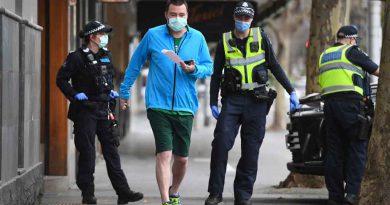ANALYSIS: The Security Challenge of the Khalistan Movement
Shawcross recorded that the Khalistanis were inciting Sikhs in Britain against the government, spreading misinformation that the British government was repressing Sikhs and helping the Indian government do the same in India
Britain has seen a recent upsurge in activity by the Khalistan movement, a faction of Sikh extremists. To many, even within the counter-extremism community, the Khalistanis are rather obscure, but it is a social and security challenge, with an international network operating.
Background
Sikhism began in the early sixteenth century in Lahore, in the Punjab area of the Subcontinent, founded by Guru Nanak, who was born to a Hindu family. Sikhs gradually grew in numbers and two centuries later, in 1710, were able to set up a state centred on Punjab. Though this first state was overwhelmed quickly, at the end of the eighteenth century a more durable Sikh Empire was created, which lasted until the Punjab was conquered by the British East India Company in 1849.
A few years later, during the Indian Mutiny, Sikhs largely sided with the British. In the aftermath, the British imposed direct rule on India, under the Raj, and the Sikhs found this a somewhat agreeable arrangement, benefiting from economic and educational investment in Punjab, and being admired for their martial prowess and loyalty. A disproportionate number of the Indian troops who fought under the British flag in the two World Wars were Sikhs. Relations began to break down in the early part of the twentieth century as the Indian Independence Movement gained momentum. The protesters killed at Amritsar in April 1919 were mostly Sikhs, for example. (Sikhism’s most sacred site, the Harmandir Sahib or Golden Temple, is in Amritsar.)
Britain withdrew hastily from the Subcontinent in August 1947. The planned partition, to create India and Pakistan, was contested, with Pakistan trying to grab Kashmir, starting a war that ignited spasms of popular mass-inter-communal violence and ethnic cleansing. Punjab, adjacent to Kashmir, was a particularly violent theatre. Of Punjab’s twenty-eight million people at the time, nearly four million (roughly 15%) were Sikhs; they suffered about a quarter-million fatalities. When the dust settled, Punjab had been divided and most Sikhs were on the Indian side of the line.
The Khalistan Movement
The origins of the Khalistan movement trace back to Partition. With Pakistan established as an overt Islamic Republic for the Subcontinent’s Muslims and India established as a secular republic with an overwhelming Hindu majority, some Sikhs advocated for the creation of an independent Sikh state, to be known as Khalistan, constructed in their old homebase of Punjab.
As Terry Milewski, a Canadian journalist who has studied the Khalistanis for decades, points out, what is most notable about the territories claimed for this future Khalistan is what they do not include: any part of historic Punjab that is within Pakistan.
Throughout the 1970s, Pakistan supported Sikh separatists in Punjab as a form of political warfare and in the early 1980s an armed campaign began. In October 1984, months after a military operation to suppress the rebellion in the Punjab, then-Prime Minister of India, Indira Gandhi, was assassinated by her two Sikh bodyguards, and a wave of popular violence against Sikhs erupted. The Khalistanis exploited this situation to further their victimhood narrative—a common tactic by extremist groups. For the next decade, a war raged, ending in the defeat of the Khalistani insurgency in 1993.
Since that time, the Khalistan movement has become largely a diaspora phenomenon. Milewski documents that in Punjab, where ninety percent of the world’s Sikhs live and participate in free elections, they vote overwhelmingly for anti-separatist Sikh candidates. In the diaspora, however, with the help of the ISI, especially in terms of propaganda, the Khalistan cause lives on.
The Extremism and Terrorism Challenge of Khalistanis in the Diaspora
Diasporas being more radical than populations “at home” is not an unusual phenomenon: jihadism has a disproportionate hold over Western Muslim populations as compared to Muslims in Islamdom, for example, and the Liberation Tigers of Tamil Eelam (LTTE) or “Tamil Tigers” relied significantly on diaspora funding to wage their war against Sri Lanka. After the downfall of the LTTE in 2009, one of the most decisive defeats of an insurgency in modern times, the LTTE’s appeal in Sri Lanka has faded and Tamils have been working to integrate into the state and society, but “most Tamils abroad remain profoundly committed to Tamil Eelam, the existence of a separate state in Sri Lanka”.
In a similar fashion, the Khalistanis outside India have worked to foster a “Lost Cause” myth among diaspora Sikh populations, presenting their aims in the language of a repressed minority seeking its rights. What this narrative leaves out is the Khalistanis acting as the pawns of Pakistan in a geopolitical game and the horrendous violence of the Khalistan movement during its war in the 1980s, not only in India.
From Milewski:
[An operative of the Khalistan movement] schemed to place bombs on two Indian planes in late June of 1985. One bomb erased 329 lives aboard Air India’s flight 182 from Montreal to Heathrow. The other blew up early, on the ground at Narita airport in Japan, killing two baggage handlers as they moved it to another Air India flight. … [The destruction of Flight 182] was, by far, Canada’s worst mass murder and the deadliest attack on aviation in world history until 9/11. And yet, as horrifying as that is, the number of victims amounts to only one-and-a-half percent of all the deaths piled up in more than a decade of armed struggle for Khalistan.
Canada has been known for some time as a central node in the Khalistani network, grouped around an organisation calling itself “Sikhs for Justice” (SFJ). The current Canadian government is currently embroiled in a public scandal relating to its inaction, despite warnings, against Chinese espionage, but before that Ottawa had clashed with the Indian government over its inattentiveness to the activities of the Khalistani extremists.
The Khalistanis in Britain
In the last few months, the reach of the Khalistan movement in Britain has made itself known. In February, the Independent Review of Prevent, the British counter-extremism program, by William Shawcross, warned of “pro-Khalistan extremism emerging from the UK’s Sikh communities”. Shawcross recorded that the Khalistanis were inciting Sikhs in Britain against the government, spreading misinformation that the British government was repressing Sikhs and helping the Indian government do the same in India, while “glorify[ing] violence carried out by the pro-Khalistan movement in India”. This was, said Shawcross, “a potentially toxic combination for the future”.
The future arrived rather quickly. On 19 March, Khalistani extremists attacked the Indian High Commission in London, injuring two security guards. One person was arrested and an investigation is underway into how this happened.
The investigation should not focus solely on how this one event happened, but the broader environment that led up to it and correcting the missteps that led to this threat being neglected for too long. Khalistani activists, similar to Islamist hate preachers, have been propagating an ideology and a set of conspiracy theory narratives that encourage Sikhs in Britain to believe they are under relentless attack and thus violence is justified in “self-defence”. This is dangerous for Sikhs, risking drawing young people and others into terrorism and criminality, and it endangers the wider society by creating divisions within a diverse population that needs cross-community understanding and harmony to thrive.



